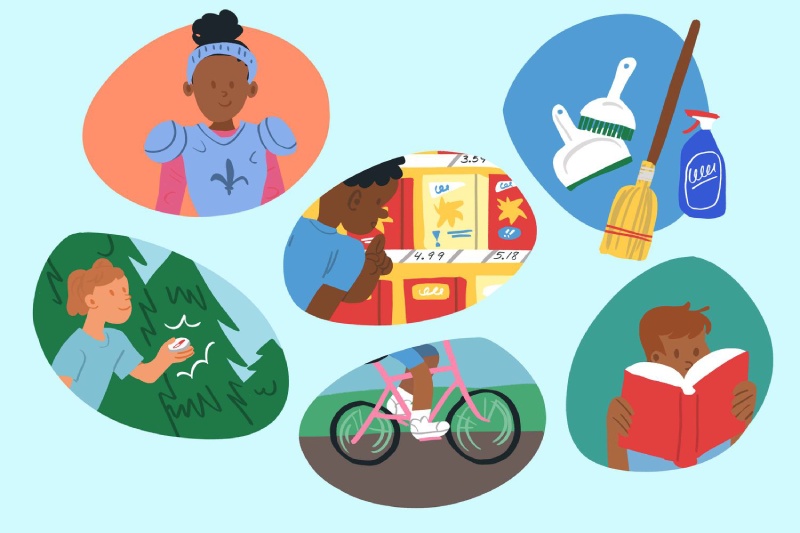
Physical milestones are important markers of a child’s growth and development, reflecting their progress in acquiring movement skills and physical abilities. From infancy through childhood, children reach various milestones at different stages, each playing a crucial role in their overall physical development. Understanding these milestones can help parents, educators, and caregivers track a child’s progress and provide appropriate support and guidance. Here are some key physical milestones across different stages of childhood.
During infancy, babies undergo rapid physical development as they learn to control their bodies and explore their surroundings. Key physical milestones during this stage include lifting their heads, rolling over, sitting up, and eventually crawling and standing with support. These early milestones lay the foundation for future movement skills and help babies develop strength, coordination, and balance.
Toddlers continue to refine their movement skills and coordination as they become more independent and mobile. Key physical milestones during this stage include walking independently, climbing stairs, kicking a ball, and running. Toddlers also begin to develop fine motor skills, such as grasping objects with their fingers, scribbling with crayons, and feeding themselves. These milestones support toddlers’ overall physical development and help them explore and interact with their environment.
Preschoolers further develop their gross and fine motor skills, refining their coordination, strength, and control. Key physical milestones during this stage include jumping, hopping on one foot, catching and throwing a ball, and riding a tricycle or bike with training wheels. Preschoolers also begin to master fine motor skills, such as using scissors, drawing shapes, and stringing beads. These milestones support children’s physical abilities and prepare them for more complex activities and tasks.
As children enter school age, they continue to refine their motor skills and build strength and endurance. Key physical milestones during this stage include skipping, jumping rope, riding a bike without training wheels, and participating in sports and physical activities. School-age children also develop greater coordination and precision in fine motor skills, such as writing neatly, tying shoelaces, and using tools and utensils effectively. These milestones contribute to children’s overall physical fitness and readiness for academic and social challenges.
During adolescence, children undergo significant physical changes as they transition into adulthood. Key physical milestones during this stage include growth spurts, changes in body composition, and the development of secondary sexual characteristics. Adolescents also continue to refine their motor skills and physical abilities through sports, exercise, and recreational activities. These milestones are accompanied by emotional and social changes as adolescents navigate the challenges of peer relationships, self-esteem, and identity formation.
While most children reach physical milestones within a typical timeframe, it’s important to recognize that development varies from child to child. Some children may reach milestones earlier or later than their peers, and individual differences in temperament, genetics, and environment can influence motor development. Additionally, certain factors, such as low muscle tone autism, may affect a child’s ability to achieve physical milestones. While low muscle tone is not exclusive to autism, it is a common trait observed in some children with autism spectrum disorder (ASD). Children with low muscle tone may have difficulty with posture, balance, and coordination, impacting their motor skills development. Understanding these variances and being aware of potential red flags, such as delays in reaching physical milestones or persistent motor difficulties, can help identify children who may benefit from early intervention and support.
Promoting physical development involves providing opportunities for children to engage in active play, exploration, and movement-based activities. Incorporating activities such as running, jumping, climbing, and playing sports into daily routines helps children develop strength, coordination, and balance. Providing toys, equipment, and materials that support gross and fine motor skills, such as balls, bikes, puzzles, and art supplies, encourages children to explore and practice their physical abilities. Additionally, creating a safe and supportive environment that allows for freedom of movement and encourages children to take risks and challenge themselves fosters physical confidence and resilience.
Physical milestones are important markers of a child’s growth and development, reflecting their progress in acquiring movement skills and physical abilities. From infancy through adolescence, children reach various milestones at different stages, each playing a crucial role in their overall physical development. Understanding these milestones, recognizing variances, and providing appropriate support and guidance are essential for promoting healthy physical development and laying the foundation for lifelong well-being.
May is Small Business Month, a time to honor and recognize the achievements of the… Read More
Swiss International University (SIU) is on track to be one of the world's most respected… Read More
In a session that left students buzzing with fresh ideas and practical insights, Invertis University… Read More
At the 21st Shanghai International Automobile Industry Exhibition, which is surging with the wave of… Read More
Liverpool, UK—House of Spells and Comic Con Liverpool are once again collaborating to bring the… Read More
Introduction In India's booming EdTech space, there's one name that's making waves among Telugu students… Read More